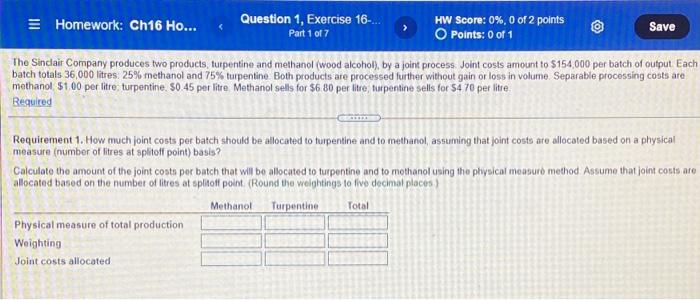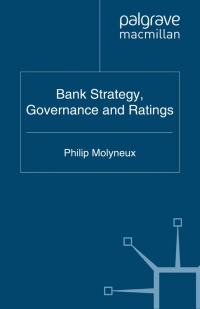= Homework: Ch16 Ho... Question 1, Exercise 16-... HW Score: 0%, 0 of 2 points Save Part 1 of 7 Points: 0 of 1 The Sinclair Company produces two products turpentine and methanol (wood alcohol), by a joint process Joint costs amount to S154,000 per batch of output. Each batch totals 36,000 litres. 25% methanol and 75% turpentine Both products are processed further without gain or loss in volume. Separabile processing costs are methanol $100 per litre, turpentine. 50 45 per litre Methanol sells for $6 80 per litre, turpentine sells for 54 70 per litre Required Requirement 1. How much joint costs per batch should be allocated to turpentine and to methanol, assuming that point costs are allocated based on a physical measure (number of litres at splitoff point) basis? Calculate the amount of the joint costs por batch that will be allocated to turpentine and to mothanol using the physical measurd method. Assume that joint costs are allocated based on the number of litres at spilot point. (Round the welghtings to five decimal places) Methanol Turpentine Total Physical measure of total production Weighting Joint costs allocated Required 1. How much joint costs per batch should be allocated to turpentine and to methanol, assuming that joint costs are allocated based on a physical measure (number of litres at splitoff point) basis? 2. If joint costs are to be assigned on an NRV basis, how much of the joint costs should be assigned to turpentine and to methanol? 3. Prepare product-line income statements per batch for requirements 1 and 2. Assume no beginning or ending inventories. 4. The company has discovered an additional process by which the nathanol (wood alcohol) can be made into laboratory ethanol. The selling price of this product would be $20 a litre. Additional processing would increase separable cost $2.95 per litre (in addition to the $1.00 per litre separable cost required to yield methanol). The company would have to pay excise taxes of 20% on the selling price of the product. Assuming no other changes in cost, what is the joint cost applicable to the ethanol (using the NRV method)? Should the company produce the ethanol? Show your computations








